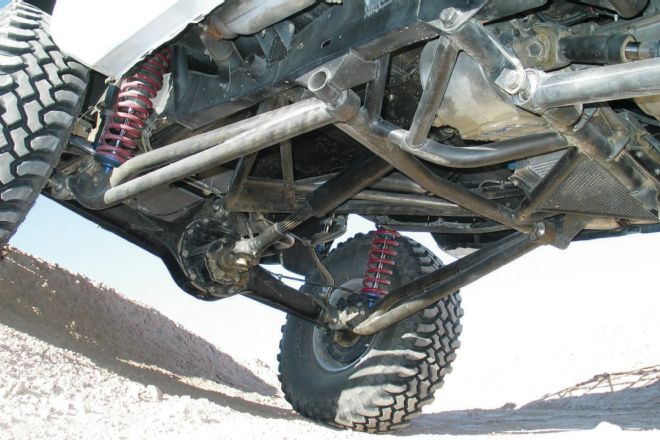
 John Cappa
Former Editor, Four Wheeler
John Cappa
Former Editor, Four Wheeler
Dakota Solid Axle Swap
Q I have a ’92 Dodge Dakota Club Cab that is a former Forest Service truck. I want to do a mild rebuild on it with new paint. Eventually, I want to swap in a Grand Cherokee 3.0L EcoDiesel if I can find one or maybe swap in a Dodge 5.9L V-8. I also want to do a solid axle swap. My question is which axles would be the best to use? I won’t be doing any severe off-roading, just some trail running, lots of highway and city driving, and some towing. I want to be able to run 33 or 35-inch tires.
Justin Iverson
Via email
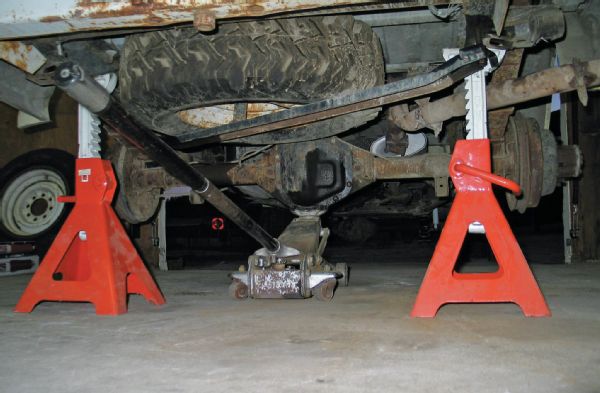
A The best wrecking-yard axle swaps generally require the least amount of work and cost far less than having a custom axle built. You have lots of axle options as long as you aren’t too worried about matching the same lug pattern that you have now. Your current wheel mounting surface widths front and rear are about 57 inches. Your truck has a driver-side drop T-case, so you’ll need a driver-drop front axle. The axles from an ’80-’91 Jeep Wagoneer would be a good swap. These trucks came with Dana 44 axles front and rear. They are about 60 inches wide and have a 6-on-5.5 lug pattern. The front axle has a driver-side differential so it will match your transfer case front output. The ’80-’87 Jeep J10 or J20 axles are also a good option, but they’re full-width (about 67 inches). The J20 axles came with a full-floating Dana 60 in the in the rear and an eight-lug Dana 44 up front with larger-diameter rotors. If you don’t mind axles that are slightly wider than what you currently have, you could swap in any Ford F-series or Bronco solid axles. The type of front suspension you decide on will likely help dictate which axles you choose. It will be easier to use some of the Ford radius-arm suspension parts if you go with the Ford radius-arm axles. Other axle options include ’94-’01 Dodge 1500 axles or ’94-present Dodge and Ram 2500 and 3500 axles.
Solenoid Solutions
Q I have an ’85 Jeep Cherokee with the 2.5L engine and a Carter YFA carburetor. It has an idle speed control solenoid (solenoid vacuum unit) attached to the carb that controls idle speed from both vacuum and electric impulses. This solenoid no longer works. Do you know of any sources for these solenoids? Thanks for any help or sources you can recommend.
Bob Packer
Via email
A The ’80s brought forth a lot of electronic and vacuum-infused mechanical emissions systems. The simple mechanical carburetors of the ’70s simply couldn’t provide the cleaner emissions that the government required. Many of these ’80s 4x4s are plagued with vacuum leaks and problematic sensors, solenoids, and emissions systems. It wasn’t until the 1990s that more advanced, and yet simpler, fuel-injection systems began cleaning up engine compartments and emissions alike. Your Jeep 2.5L is topped with an electronic- and vacuum-controlled carburetor. I poked around several websites trying to find the exact solenoids you are looking for. I found complete replacement carburetors for your Jeep at Interstate 5 Components (i-5automotive.com), Oreilly’s Auto Parts (oreillyauto.com), and Rock Auto (rockauto.com). These complete carbs appear to include the components you are looking for. Rock Auto also offers several different solenoids that may be what you are looking for. Collins Bros. Jeep (collinsbrosjeep.com) may have new and used versions of what you are looking for as well.
If you are looking to clean up some of the vacuum lines and wiring under the hood of your carbureted Jeep, Weber Carbs Direct (webercarbsdirect.com) offers a much simpler Weber replacement carburetor, although it may not be legal in some states.
Clunky Steering
Q In 2005, I bought a ’77 FJ40 Toyota Land Cruiser. It has swapped-in front and rear axles and a limited slip. It also has a spring-over suspension setup and a shackle reversal done by Proffitt’s Cruisers. It has power steering and a five-speed tranny and T-case. My problem is with the steering. It seems weak. It makes popping noises sometimes. Any clues as to what is wrong?
yotafreak
Via fourwheeler.com forums
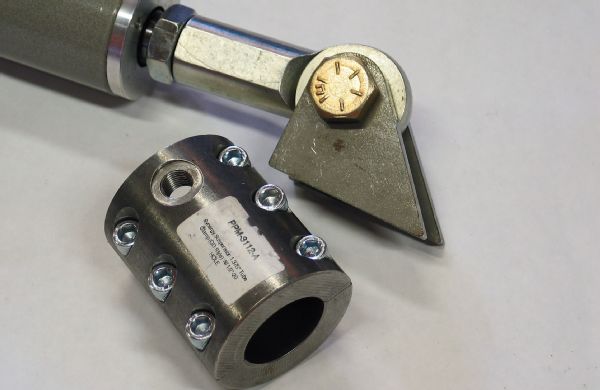
A A power steering conversion using a GM Saginaw 800 steering box is pretty common on the FJ40. It’s an extremely durable and easy-to-find steering box that can be found on everything from ’70s Camaros to Jeep FSJs. Not all of the boxes are the same, though. They can be different internally, and there are even heavy-duty versions available. These heavy-duty Saginaw 800 steering boxes can be identified by a large cast-in “76” on the side of the box housing.
I’m not convinced it’s the steering box making the noise so I wouldn’t start there. Start with the simple, inexpensive (free) stuff first. The noise could be coming from a tie rod or drag link rotating and banging around when you turn from left to right, or it could be caused by worn shackle bushings allowing the springs to walk side to side in the shackles and spring hangers. The easiest way to see exactly what is going on under there is to have a buddy sit in the driver seat and steer the vehicle right to left while you inspect the steering linkages, steering-box mount, leaf-spring ends, leaf-spring U-bolts, and so on. ), especially if you frequent the rocks. A properly set up ram-assist takes a lot of stress off of the steering box and will allow you to turn the steering wheel with one finger, even with the tires aired down.
Winch Woes
Q I have a Warn 9.5si MOSFET winch. The cable won’t retract and the controller is showing me six light flashes. That being said, the Warn rep on the website said that I have to take it to a Warn service center. There isn’t a service center in Arkansas. Do you know how to fix it, or is there a winch tech in Arkansas that you know of?
Farris Park
Via email
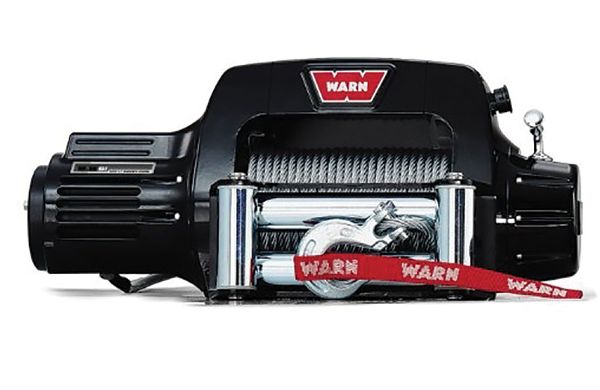
A The Warn (warn.com) 9.5si MOSFET winch was, and likely still is, one of the most advanced production enthusiast aftermarket winches ever built. The traditional electric solenoids, which have been used on winches for over half a century, were replaced with a complex and expensive circuit board. Unfortunately, the Warn 9.5si is no longer offered, but parts are still available. You could try simply replacing the MOSFET unit (Warn PN 65480). The bad news is that the MOSFET unit is the most expensive part of the winch. We found the complete electronic control assemblies that range in price from $700 to $1,200. For less than the cost of the control assembly, you could simply buy a new winch. But before you invest in a replacement control or toss the winch in the dumpster, let’s go over a few possible problems. Are you supplying a full 12 volts to the winch? Make sure the remote controller cable is in good shape. Has it been cut, smashed, or improperly repaired? If the wires inside are shorting out, it could cause the problem you are having. Are all of the pins in the controller plug intact? A missing pin or two will also cause issues. An easy way to test the winch is to try a buddy’s similar winch controller in your winch. Also, if the wiring on the winch itself has been altered to accept an in-cab switch, make sure it was done properly. If you do decide to have the winch looked at, you can pack it up and send it to one of the Warn service centers listed on the company’s website.
Tire-Size Discrepancy
Q If a tire is really a 33-inch tire and not a 35-inch tire, why do the tire companies sell it as a 35-inch tire? Do the tires measure bigger when not mounted? How do the companies measure, or better yet, why do we let the tire companies get away with this practice?
Rob FrankenTank Linthorne
Via facebook.com/fourwheelermag
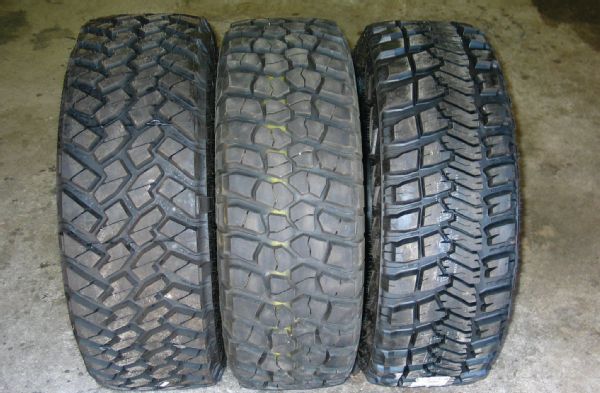
AGiven the visually different tire diameters of a given tire size, you might think that every tire manufacturer is using a different tape measure when calling out specs. There are some tires that appear much smaller than others. Rest assured that the companies are not lying about the tire sizes. Some companies have always been known to have “smaller” tires. BFG tires (bfgoodrichtires.com) used to be considered big when compared to Interco (intercotire.com) Super Swampers, which seemed significantly shorter. Today, companies like Falken (falkentire.com), Nitto (nittotire.com), and Toyo (toyotires.com) produce comparatively larger tires than BFG or Interco when looking at a specific size. Ultimately, all of the tire manufacturers measure tires when they are mounted to a specified wheel. That specified wheel may be different depending on the company or tire in question. Even so, not all 35-inch tires are exactly 35 inches tall. All of the tire companies post specs online. You can compare these specs and choose the larger tire if that’s what interests you. Pay particular attention to the “measuring rim width.” Using a wider or narrower wheel than the given measuring rim can alter the overall height and width of a tire. Even the max psi of the tire can alter the overall diameter. A tire with a higher air pressure will often bulge more, making it taller. Also, keep in mind that tires are measured with no load. A tire mounted under your 4x4 will be significantly shorter because the sidewall bulges under the load. It could very well be that the tire you think is shorter simply has a more flexible carcass, possibly allowing it provide more traction off-road than what you believe to be a taller tire.
Coilover Query
Q I’m doing a solid axle swap on my ’91 Chevy. I’m going to build a four-link with coilovers. I’m just not sure how to get the correct ride height. Should the shock be fully extended, compressed, or midway when setting ride height? My plan is to run 44-inch tires.
chevyz71.mike
Via forums.fourwheeler.com
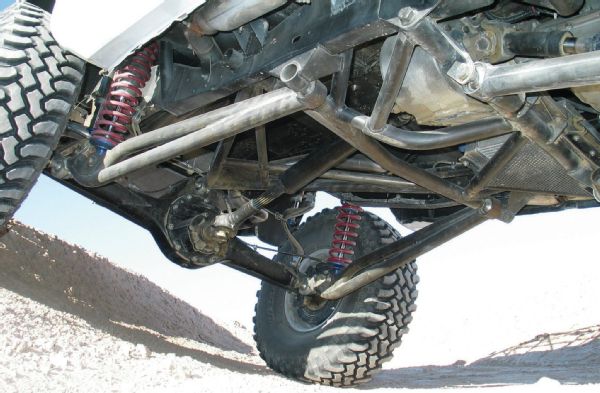
A I won’t get into the intricacies of designing and building a proper four-link here, since it would require the rest of the magazine to explain it all effectively. So assuming that you have a proper four-link design in mind, we can focus on ride height. It’s best to build the suspension at full compression, and then cycle it to find any tire, steering, driveshaft, and other interference issues. Choosing a ride height will depend on the kind of driving you plan to do. For general off-roading and on-road use, you’ll typically want the coilover shock to be resting in the middle of its travel, giving you equal amounts of up and downtravel. For slow-speed crawling over very uneven terrain, it’s often an advantage to set up the suspension with less uptravel and more downtravel. This allows the 4x4 to sit lower, making it more stable and capable, especially on sidehills and climbs.
Once you decide where you want the ride height of the truck to be, you can go to one of the many spring rate calculators online. You’ll need to know a bit about your suspension geometry, shock location, and the sprung weight of the vehicle at each corner you are working on. In addition, there are many different ways to tune a dual-rate coilover, but you can keep it simple to begin with. In most cases, you’ll want to choose the lightest coils that will maintain the ride height that you want. If you have to preload your coils more than 1 to 2 inches with the adjusters on the coilover shocks, you need to increase the coil rate by swapping to heavier springs. On the opposite end of the spectrum, you don’t want your coils to be so stiff that you don’t have enough preload to keep them from rattling around loose on the coilover at full droop.
Where to Write
Have a 4x4 tech question you want answered in Techline, drop an email to editor@fourwheeler.com or head on over to our forums at fourwheeler.com. All letters become the property of Four Wheeler, and we reserve the right to edit them for length, accuracy, and clarity. Due to the volume of mail, electronic and otherwise, we cannot respond to every reader, but we do read everything.